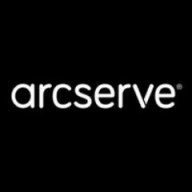

Arcserve UDP and OpenText Recover compete in data protection and disaster recovery. OpenText Recover generally has the upper hand due to its advanced features despite being more costly.
Features: Arcserve UDP provides comprehensive backup and recovery solutions, including deduplication and data compression. OpenText Recover offers advanced data recovery features with robust automation and cloud integration capabilities. OpenText's features are more robust, making it a preferred choice for advanced solutions.
Ease of Deployment and Customer Service: Arcserve UDP has a straightforward deployment process and responsive customer support, which makes it accessible. OpenText Recover presents complexity in deployment due to advanced customization but offers a strong support system. Arcserve is preferred for ease of deployment, while OpenText offers personalized support.
Pricing and ROI: Arcserve UDP offers cost-effective entry points and attractive ROI because of lower initial setup costs. OpenText Recover, despite higher setup costs, delivers strong ROI with extensive features favored by enterprises with complex needs. Arcserve suits budget-conscious businesses, whereas OpenText attracts those prioritizing comprehensive capabilities.
| Product | Market Share (%) |
|---|---|
| Arcserve UDP | 2.2% |
| OpenText Recover | 0.3% |
| Other | 97.5% |


| Company Size | Count |
|---|---|
| Small Business | 23 |
| Midsize Enterprise | 10 |
| Large Enterprise | 9 |
OpenText Recover offers businesses a robust data protection solution, ensuring continuity and data recovery across key infrastructures.
With OpenText Recover, organizations are empowered with reliable recovery measures that protect mission-critical data, featuring seamless integration across various platforms. The technology aligns with industry's best practices, delivering comprehensive safeguards that enhance resilience.
What are the key features of OpenText Recover?OpenText Recover is widely implemented across industries like finance, healthcare, and telecommunications. It supports data integrity and swift recovery in financial systems, ensures patient data is safeguarded in healthcare, and helps telecom providers maintain uninterrupted services. The diverse applications make it a versatile tool in maintaining critical operations.
We monitor all Disaster Recovery (DR) Software reviews to prevent fraudulent reviews and keep review quality high. We do not post reviews by company employees or direct competitors. We validate each review for authenticity via cross-reference with LinkedIn, and personal follow-up with the reviewer when necessary.